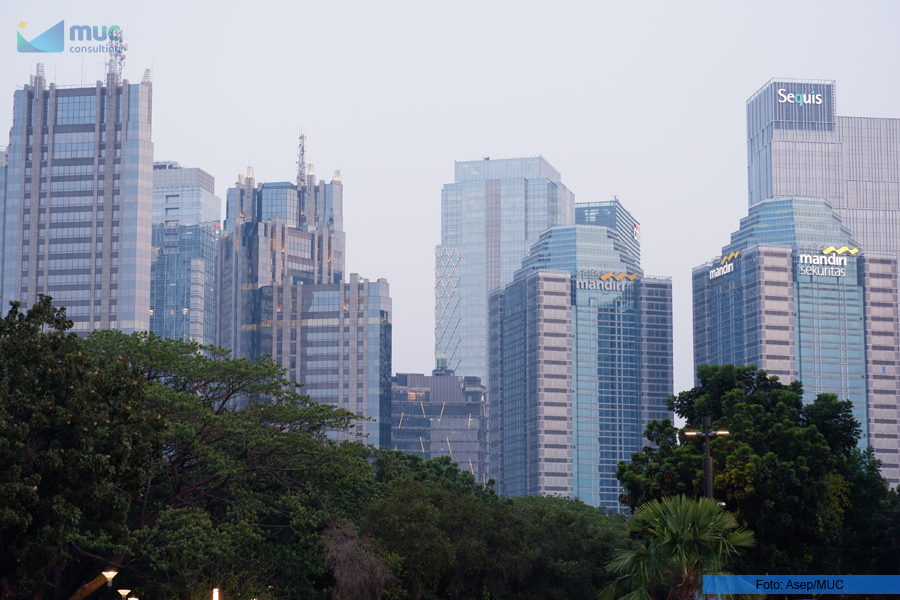The government provides flexibility to taxpayers in determining the useful life of assets, when calculating the depreciation value for tangible assets (depreciation) or depreciation of intangible assets (amortization).
This provision regarding depreciation is important for the taxpayer to know. This is because depreciation of assets needs to be done so that the value of assets reported by taxpayers in their financial statements is in accordance with the current value. To calculate the depreciation value of assets owned, there are two things that must be known, namely the value of the asset and the useful life.
The flexibility provided is for tangible assets in the form of permanent buildings or intangible assets that have a useful life of more than 20 years.
Based on the latest regulation regarding Income Tax (PPh), namely Government Regulation (PP) Number 55 of 2022, taxpayers get flexibility in choosing the useful life used in calculating the depreciation or amortization value for assets with a useful life of 20 years.
This flexibility is in the form of freedom to choose the useful life of depreciation whether to use the useful life of 20 years or according to the actual useful life based on the taxpayer's bookkeeping, as long as it is carried out according to the principles.
This provision is an affirmation of Law (UU) Number 7 of 2021 concerning Harmonization of Tax Regulations (HPP) which is the umbrella for government regulation number 55 year 2022.
Flexibility of Acquired Assets Before 2022
Even so, apart from emphasizing the flexibility that exists in the HPP Law, government regulation number 55 also expands its flexibility. For assets with a useful life of more than 20 years owned by taxpayers before the 2022 tax year and have been depreciated for a useful life of 20 years, taxpayers can choose to continue using the useful life of 20 years or according to the actual useful life based on the taxpayer's bookkeeping.
For the record, specifically for depreciation of assets that use the actual useful life, flexibility applies if the taxpayer submits a notice to the Director General (Director General) of Taxes no later than the end of the 2022 tax year.
Meanwhile, taxpayers who choose a depreciation benefit period of more than 20 years are not required to notify the Director General of Taxes.
Depreciation Methods and Rates
As stipulated in Article 11 of the Income Tax Law as last amended by the HPP Law and Article 21 of government regulation number 55 of 2022, there are two ways to calculate depreciation.
First, the straight-line depreciation method, namely depreciation that charges the same depreciation cost over the useful life of the tangible asset.
This depreciation method can be used for the purchase, establishment, addition, repair or change of tangible assets with a useful life of more than one year and is used to obtain, collect and maintain income.
Second, the declining balance depreciation method, namely depreciation calculated by multiplying the depreciation rate against the remaining book value. This depreciation method can be used for assets and buildings with a useful life of more than 1 year.
Expenditures for acquiring lands having the status of right of ownership, including land with the status of right to build, right to cultivate and right to use for the first time may not be depreciated.
The use of the depreciation method for assets must be carried out according to the principle.
Specifically for tangible assets, in determining the useful life and depreciation rates, the government classifies tangible assets into two parts. First,non-building assets and building assets.
Furthermore, non-building assets are divided into four groups according to their useful life. (see Table)
| Group of Assets | Useful Life | Straight-line Rate | Declining Balance Rate |
| Group of Buildings: | |||
|
4 years | 25% | 50% |
|
8 years | 12,5% | 25% |
|
16 years | 6,25% | 12,5% |
|
20 years | 5% | 10% |
| Buildings: | |||
|
20 years | 5% | |
|
10 years | 10% |
Then for intangible assets, as stated in Article 11A of the HPP Law paragraph (2) the determination of the useful life and rates is carried out by grouping intangible assets into four groups. (See table).
| Group of Intangible Assets | Useful Life | Straight-line Rate | Declining Balance Rate |
| Group 1 | 4 years | 25% | 50% |
| Group 2 | 8 years | 12,5% | 25% |
| Group 3 | 16 years | 6,25% | 12,5% |
| Group 4 | 20 years | 5% | 10% |
The Timing of Calculation
Both depreciation and amortization calculations are carried out from the month when the taxpayer incurs expenses to acquire property. Except, for tangible assets that are still in the process of being worked on, have never been used or produced, or tangible assets that are owned and used in a certain field of business.
For tangible assets that are still in the process of being worked on, the depreciation calculation is carried out when it is completed. Then for tangible assets that have not been used or are producing, depreciation is calculated when the assets start to produce with the approval of the Director General of Taxes.
More detailed provisions regarding the timing of calculations to the procedure for submitting notification to the Director General of Taxes will be regulated in more detail in the Regulation of the Minister of Finance. (ASP/CHY/KEN)







